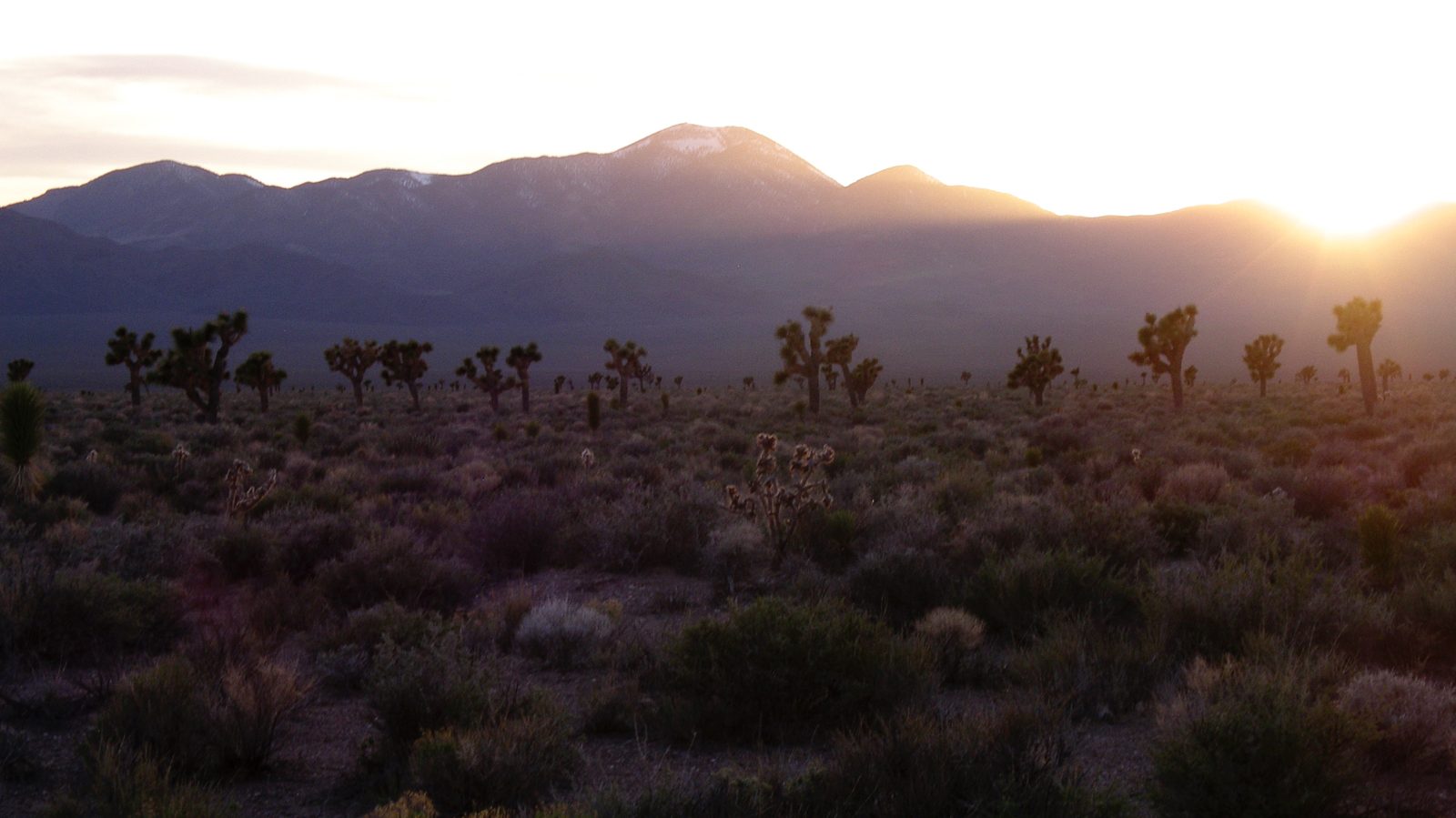

A fieldwork update from JTGP collaborator Karolina Heyduk, a plant physiologist and Assistant Professor at the University of Hawai’i Mānoa.
There’s heat, and then there’s Nevada’s 105°F heat that is so dry your skin feels like it should audibly sizzle when you step outside. That’s the kind of heat the Joshua Tree project’s team members found themselves in early June when we all met in the desert to collect some preliminary data for our NSF award. We’re about a year into the project; seeds of Joshua trees were started back in 2020, seedlings were out-planted earlier this spring, and now we’re giving them a year to acclimate to their common gardens before we assess the level to which local adaptation is playing a role in shaping the demography, population structure, and long-term success of this iconic desert species.
We all met outside of Las Vegas, Nevada, where JTGP scientists Dr. Lesley DeFalco and Dr. Todd Esque, both with the USGS, are based. Todd and Lesley have led the development of our common garden experiments and manage the day-to-day operations of the gardens. Earlier this spring Todd and Lesley led a massive effort, assisted by a small army of USGS researchers, to get the seedlings started and planted in the gardens. The four common gardens are spread across the Mojave and have been planted with Joshua trees (Yucca brevifolia and Yucca jaegeriana) from populations that have different home environments. The seedlings are only a few inches tall, but already we can see differences in “garden effects” – that is, seedlings in the hottest garden are growing much more slowly than those in a wetter, more northerly garden. While we definitely could see garden effects, it’s too early to tell if plants from different populations are faring better in different gardens. That’ll be what we hope to discover with the data we will collect next year in the summer of 2022.
Read More






You must be logged in to post a comment.